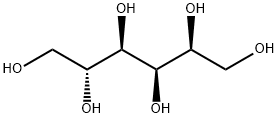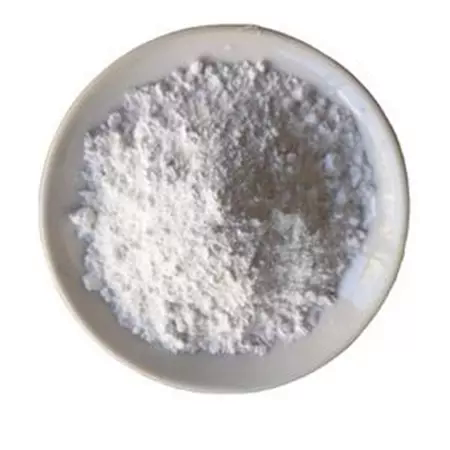Flunixin meglumine
Synonym(s):2-[[2-Methyl-3-(trifluoromethyl)phenyl]amino]-3-pyridinecarboxylic acid meglumine salt;Banamine;Flunixin meglumine
- CAS NO.:42461-84-7
- Empirical Formula: C14H11F3N2O2.C7H17NO5
- Molecular Weight: 491.46
- MDL number: MFCD01725419
- EINECS: 255-836-0
- SAFETY DATA SHEET (SDS)
- Update Date: 2025-03-21 09:19:54

What is Flunixin meglumine?
Chemical properties
White Solid
The Uses of Flunixin meglumine
Flunixin meglumine has been used as a nonsteroidal anti-inflammatory drug standard in electrospray ionization mass spectrometry (LC-ESI/MS).
The Uses of Flunixin meglumine
Cyclooxigenase inhibitor. Anti-inflammatory; analgesic; antipyretic.
The Uses of Flunixin meglumine
dental carries prophylactic
Definition
ChEBI: An organoammonium salt obtained by combining flunixin with one molar equivalent of 1-deoxy-1-(methylamino)-D-glucitol. A relatively potent non-narcotic, nonsteroidal analgesic with anti-inflammatory, anti-endotoxic and anti-pyretic propert es; used in veterinary medicine for treatment of horses, cattle and pigs.
brand name
Banamine Veterinary (Schering-Plough Animal Health).
General Description
Flunixin meglumine is a nonsteroidal anti-inflammatory drug and a potent cyclo-oxygenase (COX) inhibitor. It is commonly used as an analgesic and antipyretic in animals.
Pharmaceutical secondary standards for application in quality control, provide pharma laboratories and manufacturers with a convenient and cost-effective alternative to the preparation of in-house working standards.
Biological Activity
flunixin meglumine serves as a non-narcotic and non-steroidal analgesic agent with antipyretic activities. as a potent inhibitor of the enzyme cyclooxygenase, flunixin meglumine has demonstrated a wide-spectrum of biological activities including anti-inflammation and pain-alleviating. moreover, flunixin meglumine could be applied as a drug in animals for the management of intestinal ischaemia, colic, and endotoxemia. [1]
Biochem/physiol Actions
COX1, COX2 and PLA2 inhibitor non-narcotic analgesic, anti-pyretic, anti-inflammatory.
Synthesis
Flunixin meglumine is prepared by the reaction of 1-deoxy-1-(methylamino)-D-glucitol and flunixin. The steps are as follows:
Reacting the flunixin with N-methylglucamine in isopropanol, the molar ratio of flunixin to N-methylglucamine is 2:1; fluorine Nisin has a mass ratio to isopropanol of 1:11; and simultaneously added maltodextrin; the molar ratio of the maltodextrin to 2-methyl-3-trifluoromethylaniline is 1:2.5; heating Reflux, filtration, cooling, stirring and crystallization, stirring is continued until the temperature of the system drops below 25 ° C, and the crystals are filtered with suction to obtain flunixin meglumine.
Veterinary Drugs and Treatments
In the United States, flunixin meglumine is approved for use in
horses, cattle
and swine; however, it is approved for use in dogs in
other countries. The approved indications for its use in the horse
are for the alleviation of inflammation and pain associated with
musculoskeletal disorders and alleviation of visceral pain associated
with colic. In cattle it is approved for the control of pyrexia
associated with bovine respiratory disease and endotoxemia, and
control of inflammation
in endotoxemia. In swine, flunixin is approved
for use to control pyrexia associated with swine respiratory
disease.
Flunixin has been suggested for many other indications in various
species, including: Horses: foal diarrheas,
shock, colitis, respiratory
disease, post-race treatment, and pre- and post ophthalmic
and general
surgery; Dogs: disk problems, arthritis, heat stroke, diarrhea,
shock, ophthalmic inflammatory conditions, pre- and post
ophthalmic and general surgery, and treatment of parvovirus infection;
Cattle: acute respiratory disease, acute coliform mastitis with
endotoxic shock, pain (downer cow), and calf diarrheas; Swine:
agalactia/hypogalactia, lameness, and piglet diarrhea. It should be
noted that the evidence
supporting some of these indications is
equivocal and flunixin may not be appropriate for every case.
in vitro
an in vitro whole blood model in feedlot calves was adopted to detect the activity of the anti-inflammatory agents flunixin-meglumine (flu), rs (±) carprofen (cpf) and s (+) cpf. the drugs all exhibited inhibitory activity on coxs, with an order of flu > s (+) cpf > rs (±) cpf in their potency. this finding indicated that flu was a nonselective suppressorr of bovine coxs, whereas rs (±) cpf and s (+) cpf selectively inhibited cox-2 isoenzyme. [2]
in vivo
findings from mice, rats and monkeys suggested flunixin meglumine as a potent non-narcotic analgesic agent after parenteral administration. after being subcutaneous administered, this agent showed higher efficacy than pentazocine, meperidine and codeine in the rat yeast paw test. intramuscular administration and subcutaneous administration of flunixin meglumine had similar effects. moreover, orally administered flunixin meglumine also exerted analgesic and anti-inflammatory activities. based on mice abdominal constriction test, flunixin meglumine had comparable efficacy to pentazocine and was more potent than meperidine and codeine. in primates, 10 mg/kg flunixin meglumine showed an equal efficacy to that of 0.3 mg/kg morphine. [1]
References
[1]ciofalo vb, latranyi mb, patel jb and taber ri. flunixin meglumine: a non-narcotic analgesic. j pharmacol exp ther. 1977 mar; 200(3): 501-7.
[2]miciletta m, cuniberti b, barbero r and re g. in vitro enantioselective pharmacodynamics of carprofen and flunixin-meglumine in feedlot cattle. j vet pharmacol ther. 2014 feb; 37(1): 43-52.
[3] jochle w, moore jn, brown j, baker gj, lowe je, fubini s, reeves mj, watkins jp and white na. comparison of detomidine, butorphanol, flunixin meglumine and xylazine in clinical cases of equine colic. equine vet j suppl. 1989 jun; (7): 111-6.
Properties of Flunixin meglumine
| Melting point: | 136.6-137.4 °C |
| alpha | -9~-12゜(D/20℃)(c=12,CH3OH) |
| storage temp. | room temp |
| solubility | H2O: freely soluble |
| form | solid |
| color | off-white |
| Water Solubility | soluble |
Safety information for Flunixin meglumine
| Signal word | Warning |
| Pictogram(s) |
 Exclamation Mark Irritant GHS07 |
| GHS Hazard Statements |
H315:Skin corrosion/irritation H319:Serious eye damage/eye irritation H335:Specific target organ toxicity, single exposure;Respiratory tract irritation |
| Precautionary Statement Codes |
P261:Avoid breathing dust/fume/gas/mist/vapours/spray. P264:Wash hands thoroughly after handling. P264:Wash skin thouroughly after handling. P271:Use only outdoors or in a well-ventilated area. P280:Wear protective gloves/protective clothing/eye protection/face protection. P302+P352:IF ON SKIN: wash with plenty of soap and water. P305+P351+P338:IF IN EYES: Rinse cautiously with water for several minutes. Remove contact lenses, if present and easy to do. Continuerinsing. |
Computed Descriptors for Flunixin meglumine
Flunixin meglumine manufacturer
New Products
3-Iodophenylacetic acid 3-Pyridineacetonitrile, α-hydroxy- 2-Propanamine, 1-chloro-, hydrochloride (9CI) 3-(hexyloxy)-4-(pyridin-3-yl)-1,2,5-thiadiazole 2-Hexyn-1-ol Dibenzo-18-crown-6 Nickel(II) perchlorate hexahydrate, 98% 4-Bromophenylacetonitrile, 95% 3-Bromo-4-fluoroaniline, 97% Sodium tetraborate decahydrate, 98% Palladium(II) acetate, trimer, Pd 99% 4-Bromo-2-chlorotoluene, 97% N N Dimethylformamide Dimethyl Acetal (Dmf Dma) 2,3-Dichloro Benzoyl Cyanide [Side Chain] Bis(2-Chloroethyl) Amine Hydrochloride L-Glutamic Acid Diethyl Ester Hydrochloride 5-(Difluoromethoxy)-2-Mercaptobenzimidazole 1-Ethyl-3-(3-Dimethylaminopropyl)-Carbodiimide Hydrochloride [EDC Hcl] 1,4-Napthoquinone Bromoiodomethane Sodium Bicarbonate Methylene Dichloride (MDC) Ethyl Acetate Indole-3-Carbinol (I3C)Related products of tetrahydrofuran








You may like
-
 42461-84-7 Flunixin Meglumine EP/USPView Details
42461-84-7 Flunixin Meglumine EP/USPView Details
42461-84-7 -
 42461-84-7 99%View Details
42461-84-7 99%View Details
42461-84-7 -
 Flunixin meglumine 95.00% CAS 42461-84-7View Details
Flunixin meglumine 95.00% CAS 42461-84-7View Details
42461-84-7 -
 42461-84-7 99%View Details
42461-84-7 99%View Details
42461-84-7 -
 Flunixin meglumine 42461-84-7 98%View Details
Flunixin meglumine 42461-84-7 98%View Details
42461-84-7 -
 Flunixin meglumine 98%View Details
Flunixin meglumine 98%View Details
42461-84-7 -
 Flunixin meglumine 98% (HPLC) CAS 42461-84-7View Details
Flunixin meglumine 98% (HPLC) CAS 42461-84-7View Details
42461-84-7 -
 Flunixin meglumine CAS 42461-84-7View Details
Flunixin meglumine CAS 42461-84-7View Details
42461-84-7
